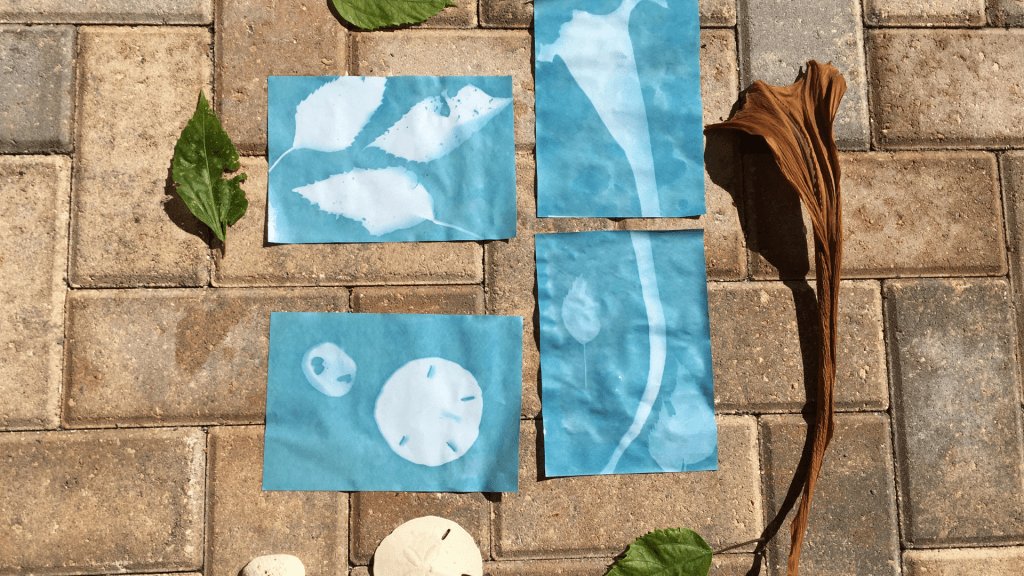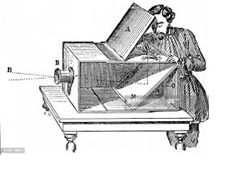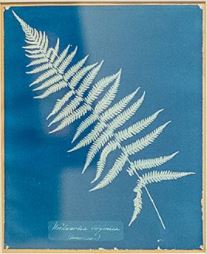Art Break with the MFA! Sun Prints

Art Break with the MFA! Sun Prints
Have you ever taken a photograph? Today, people use the camera on their cell phones to take pictures of themselves, their family, their pets, and even their food. Because we often have cameras with us all the time, photography is sometimes taken for granted. But artists and scientists have spent centuries experimenting with ways to capture images of the world around them. The MFA’s special exhibition, Copper, Silver, Salt, Ink: The Chemistry of Photography’s Enduring Desires, celebrates these experimental processes and the evolution of photography over time.
The word “photography” means “drawing with light.” It comes from the Greek words phos, or light, and graphê, or drawing. Throughout the 1800s, inventors across Europe created different ways to use light to record actual scenes and objects. Early photographic methods included calotypes, daguerreotypes, and photogravures. Each of these methods used a camera. These cameras weren’t like the ones we use today but instead were dark boxes with a small hole that let in light. Early photographers would place papers or plates, coated in a variety of chemicals, into the camera to expose them to the light, which would create a chemical reaction that made a photograph.
In the 1840s, British botanist Anna Atkins recorded the plants she collected and studied them using cyanotypes, a type of photography that does not require a camera. To make her images, Atkins would lay plant materials onto paper that was coated with iron compounds and set them in the sun. The ultraviolet light from the sun created a chemical reaction on the paper, producing a shadow image of the plant that was revealed when the paper was rinsed with water. This process has earned cyanotypes the nickname “sun prints.”
Atkins published her plant cyanotypes in a series of books, including Cyanotypes of British and Foreign Ferns from 1853. The cyanotype on display in the MFA’s special exhibition depicts a frond of the fern woodwardia virginica, also known as the Virginia Chain Fern. This plant is native to wetlands across the Eastern United States and Canada. It is one of the hundreds of species of plants that Atkins recorded using cyanotypes. Today, her books are considered by many to be the first illustrated with photographs, and she is often cited as the first female photographer.
Try creating your own cyanotypes at home! You can purchase “sun print” paper online or at a craft store. Once you have your paper, take a walk around your home, neighborhood, or favorite park to find plants, rocks, or other interesting items to use in your cyanotype. Once you have your paper and objects, follow the steps below to create your sun print. Use #MFAFromHome to share your creations with us online!
Materials:
- Cyanotype or Sun Print Paper
- Leaves, sticks, flowers, rocks, shells, or other items from nature
- Sunlight
- Water
Directions:
- Because cyanotype paper is very sensitive to sunlight, don’t remove it from its packaging until you are ready to create your image. Gather the items you want to capture in your print, and decide how you want to arrange them on your paper.
- In a very sunny spot, remove your cyanotype paper from its packaging, and lay it down in the sun with the blue side up. Quickly lay down your plants, rocks, or shells on the paper.
- Leave your paper and items in the sun for approximately 3 minutes, or until the blue paper turns white. Remember, not to touch or move any objects while your print is developing.
- When the paper has turned white, carefully remove your items and rinse the print in lukewarm water for 1 minute. Lay your print flat to air dry. As it dries, the background of your paper will turn blue again, while the shadow image of your objects will turn white!
- Optional: Research the types of plants, rocks, shells, or other natural items you used for your print. On the back of your print, or on a separate piece of paper, write down the name of the item, where you found it, and three interesting facts about it. Create a series of sun prints with different types of plants or objects, and bind them together to make a book like Anna Atkins!
Image: Anna Atkins, British, 1799–1871, Woodwardica Virginica (America), from Cyanotypes of British and Foreign Ferns, 1853 Cyanotype, On loan from the Drapkin Collection

